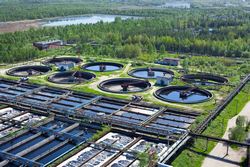A better way to monitor and save energy
In the energy-intensive treatment of wastewater, the aeration of settled sewage accounts for over half the energy costs. This process is monitored using dissolved oxygen and ammonia probes, but these are unreliable under changing conditions. In order to comply with the EU's strict effluent standards, water utilities over-aerate. This activated sludge process needs to be optimised in order to minimise energy consumption. The EU-funded FLUORO-BOOST (Fluorescence-based optimisation of sewage treatment) aimed to find the relationships between the fluorescence of wastewater at several stages of treatment in the laboratory and at full scale. The team would then use these relationships in a real-time control system. Project members set about finding the relationship between the fluorescence of wastewater and the chemical and microbial quality across three experimental stages. The stages progressed from laboratory scale to full scale analysis with each stage building on the results of the previous one. FLUORO-BOOST researchers installed two submersible and two cuvette-based portable spectroscopy devices at a wastewater treatment plant. The research group chose these devices to check the feasibility of using them at full scale. Researchers were able to build a large database of fluorescence and standard parameters. From these, they identified a strong correlation between fluorescence values and chemical as well as microbial quality. The team used the real-time experiment to show that fluorescence spectroscopy can detect minor changes in effluent quality. FLUORO-BOOST was able to identify advantages and limitations in applying the technique to assess wastewater quality. FLUORO-BOOST anticipates that its results will have a great impact on the research community as well as the wastewater treatment industry as a whole. The researchers also hope that their results will help other researchers to develop better strategies for fluorescence spectroscopy in water quality monitoring.
Keywords
Wastewater treatment, effluent, real-time monitoring, activated sludge process, FLUORO-BOOST, fluorescence



